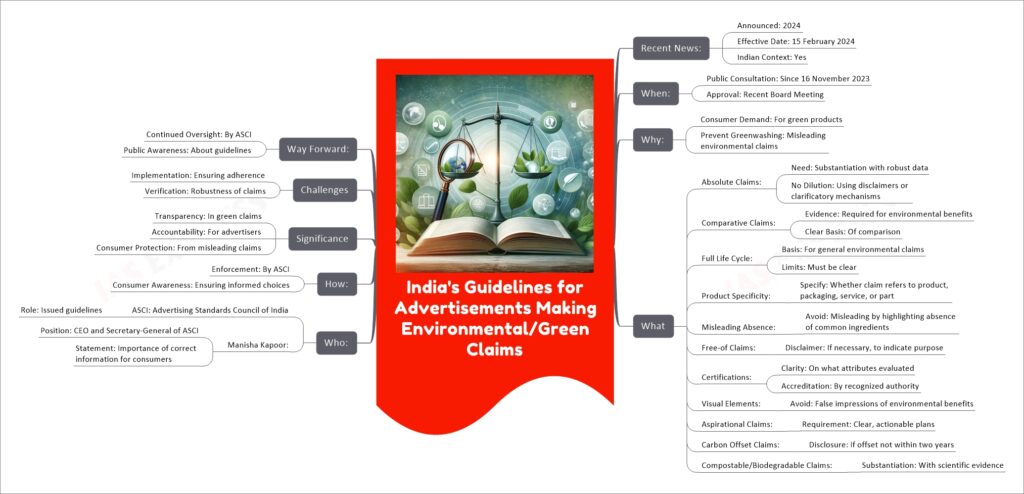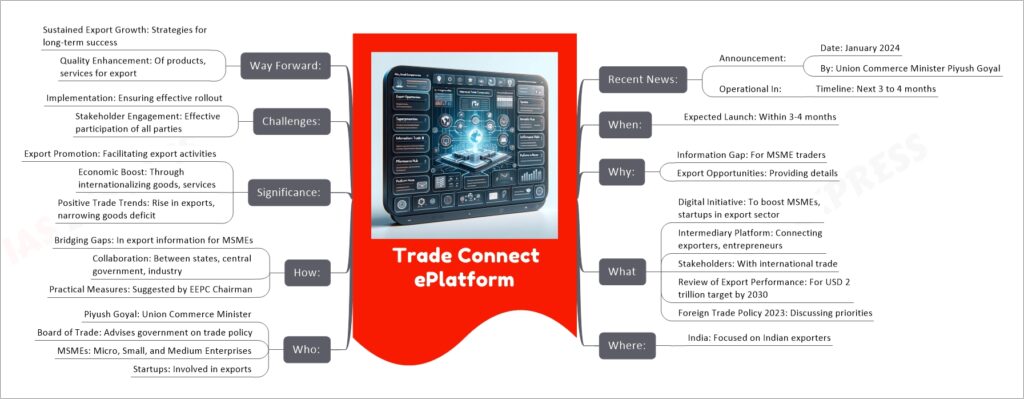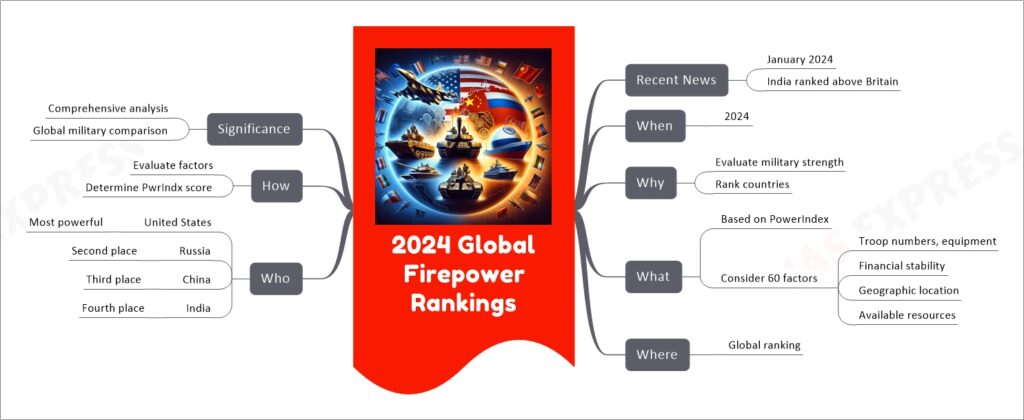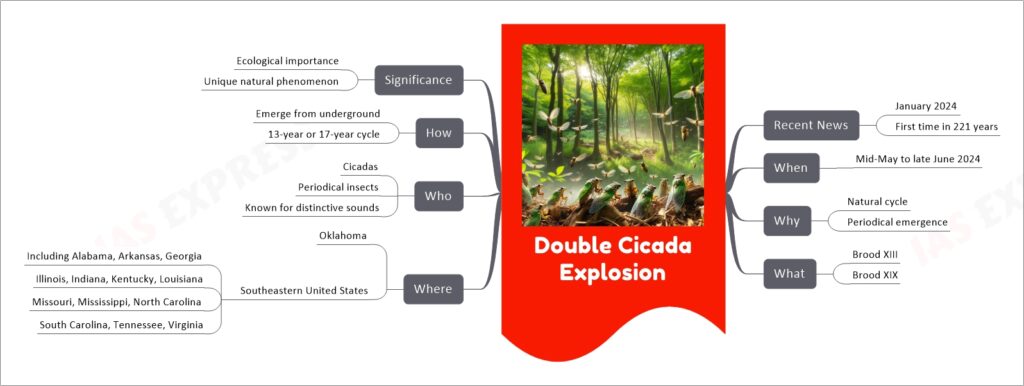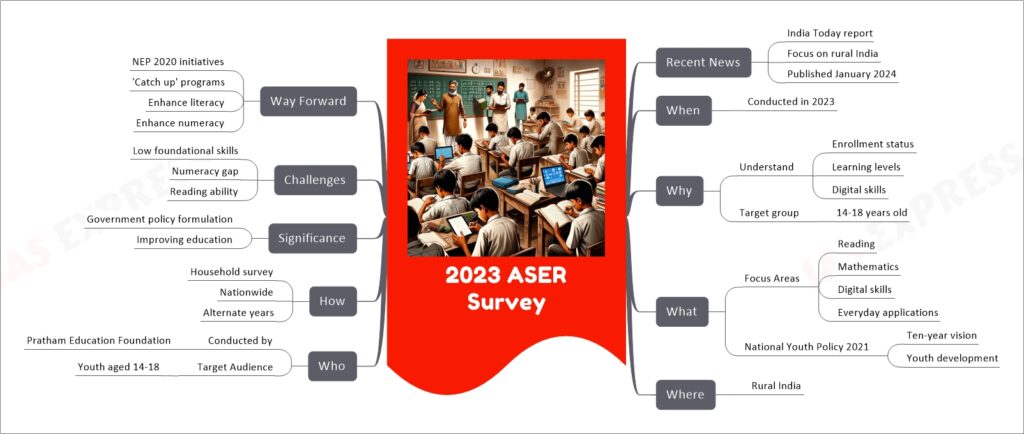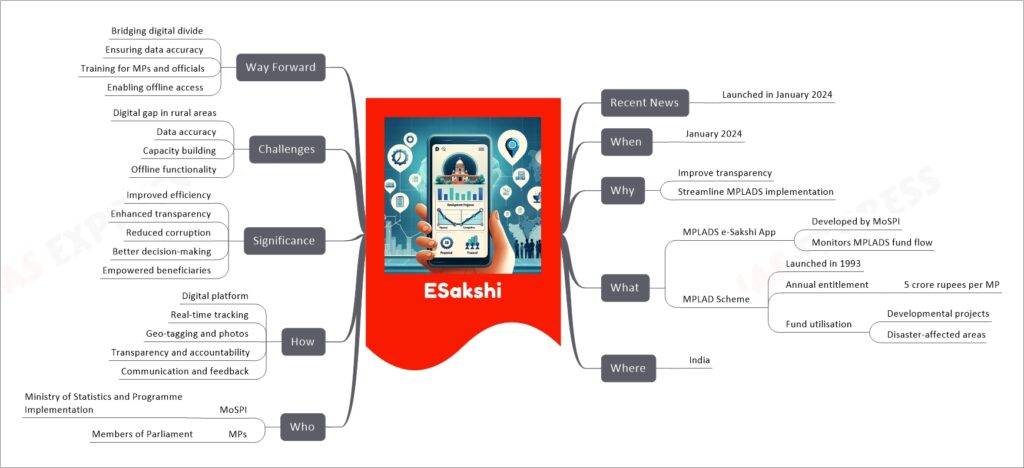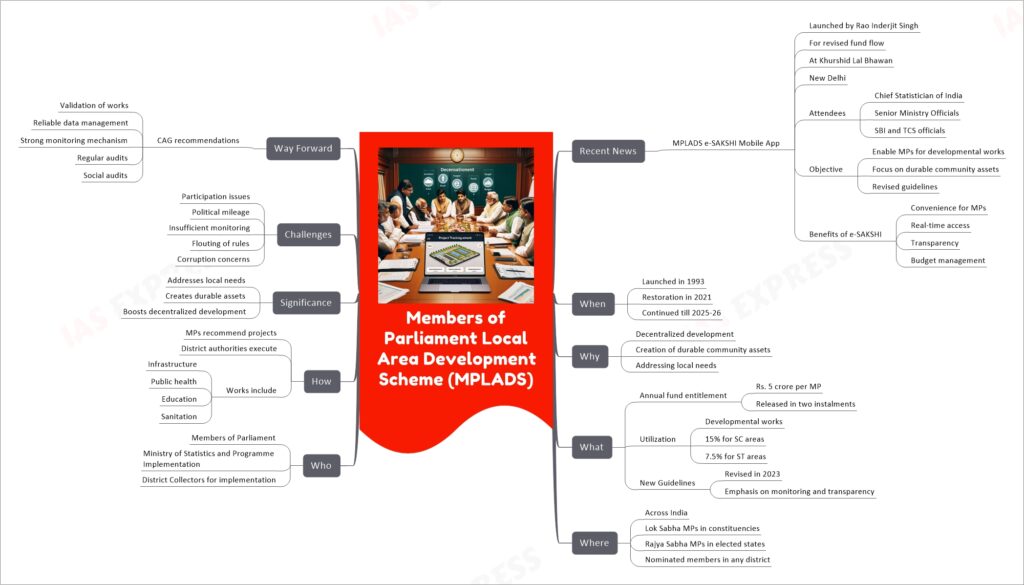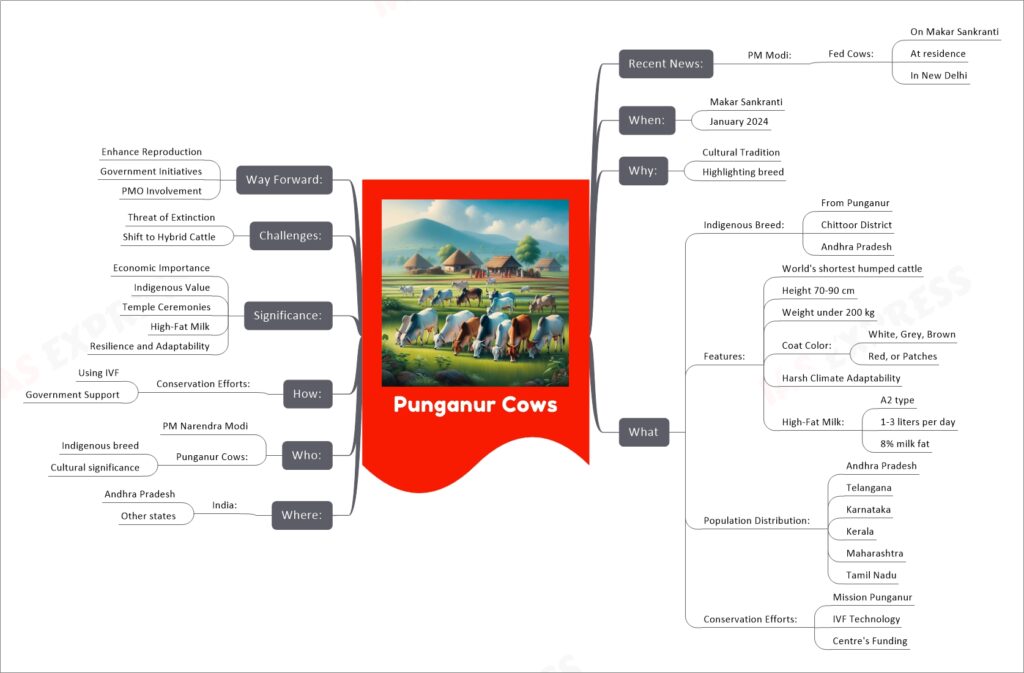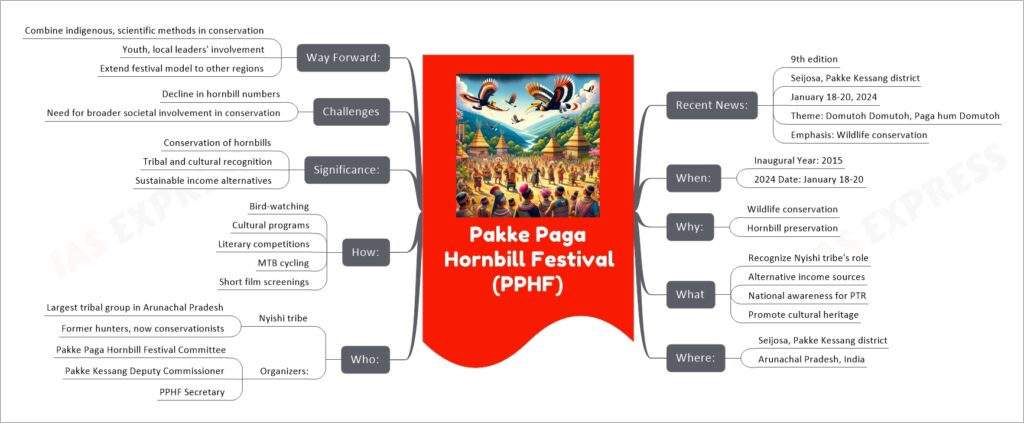[Newsbits] 20.01.2024: Punganur Cows, eSakshi, Pakke Paga Hornbill Festival (PPHF) & more

India’s Guidelines for Advertisements Making Environmental/Green Claims, introduced by the Advertising Standards Council of India (ASCI), aim to ensure transparency and prevent misleading environmental claims in advertising, commonly known as greenwashing. These guidelines, effective from February 15, 2024, require advertisers to make reliable, verifiable, and transparent claims about the environmental impact of their products or services. The guidelines cover various aspects such as absolute and comparative claims, full life cycle of products, specificity of claims, certifications, and visual elements in advertisements. They represent a significant step towards promoting honesty and accountability in environmental claims in the Indian advertising sector. The RBI’s State of the Economy Report for January 2024 offers a comprehensive analysis of India’s economic status. It primarily focuses on understanding the financial risks, particularly those related to climate change, and the need for developing agricultural markets. The report highlights the vulnerability of banks to climate-related financial risks and emphasizes the significance of improving agricultural market infrastructure to manage supply and stabilize food prices. It underscores the challenges in modeling climate hazards and the lack of data, while suggesting the way forward through refining stress testing and updating policies periodically for better risk management. The “Trade Connect ePlatform” is an upcoming digital initiative announced in January 2024 by Union Commerce Minister Piyush Goyal. It aims to boost the involvement of micro, small, and medium enterprises (MSMEs) as well as startups in the export sector. The platform, expected to be operational in the next three to four months, will act as an intermediary connecting Indian exporters and entrepreneurs with various stakeholders in international trade. The primary goal is to bridge the information gap for MSME traders, providing them with crucial details and opportunities for export activities. This initiative is part of a broader effort to review export performance, with the ambitious target of achieving USD 2 trillion in exports by 2030. The platform is set to play a significant role in promoting exports, enhancing product quality, and boosting the economy through increased involvement of small and medium traders in the global market. The 2024 Global Firepower Rankings evaluate the military strength of various countries, ranking them based on factors like troop numbers, military equipment, financial stability, geographic location, and available resources. In this year’s ranking, the United States tops the list, followed by Russia, China, and India, showcasing their global military dominance. The rankings are based on a comprehensive analysis of over 60 factors, condensed into a PowerIndex score, providing a global comparison of military capabilities and strength. The Draft Indian Stamp Bill, 2023, proposed by India’s Ministry of Finance, aims to modernize the stamp duty regime by replacing the outdated Indian Stamp Act of 1899. This move seeks to align the tax system with current realities, specifically regarding taxes levied on stamps for instruments recording transactions. The Central Government, responsible for imposing stamp duties, has invited public suggestions to refine the bill, reflecting a collaborative approach to legislative reform. The bill signifies an essential step in updating India’s fiscal statutes to better suit contemporary needs. The “Double Cicada Explosion” refers to a rare natural event occurring in 2024, where two cicada broods, XIII and XIX, are set to simultaneously emerge for the first time in 221 years. This phenomenon is happening in Oklahoma and other parts of the Southeastern United States. These periodical cicadas, known for their distinctive sounds, follow a 13-year or 17-year cycle, emerging from underground. The event is significant ecologically, representing a unique aspect of the natural world. The 2023 ASER (Annual Status of Education Report) survey, conducted by the Pratham Education Foundation, is a comprehensive study focusing on the educational status and learning levels of children in rural India, particularly targeting the youth aged 14-18. The survey’s primary objectives include assessing students’ enrollment status, their proficiency in reading and mathematics, and their digital skills. Key findings include a notable gap in foundational literacy and numeracy skills among rural youth, with a significant percentage struggling with basic English and math. The report serves as a crucial tool for government policy formulation and highlights the need for targeted educational initiatives to bridge the skill gap. eSakshi is a newly launched mobile application in January 2024, developed by the Ministry of Statistics and Programme Implementation (MoSPI) in India. It’s designed to revolutionize the Member of Parliament Local Area Development Scheme (MPLADS) by increasing transparency and efficiency in the management of development projects. The app allows MPs to propose, track, and oversee projects in their constituencies, facilitating better decision-making and reducing the risk of fund misuse. While it marks a significant step towards modernizing the MPLADS implementation, it faces challenges like bridging the digital divide in rural areas and ensuring data accuracy. The Member of Parliament Local Area Development Scheme (MPLADS) is an initiative in India, launched in 1993, aimed at decentralized development through the creation of durable community assets based on locally felt needs. Recently, a new MPLADS e-SAKSHI Mobile Application was launched to enhance the scheme’s fund flow procedure, ensuring transparency, accessibility, and efficient management of projects by MPs. The scheme, overseen by the Ministry of Statistics and Programme Implementation, allows MPs to recommend developmental works in their constituencies or states. It has faced challenges like insufficient participation, political influence, and monitoring issues, prompting calls for adherence to Comptroller and Auditor General (CAG) recommendations for improved implementation. Punganur cows, native to the Punganur area in Andhra Pradesh, India, are known for being the world’s shortest humped cattle breed. Recently, they were highlighted when the Prime Minister of India, Narendra Modi, fed them on Makar Sankranti at his residence in New Delhi. This act not only followed cultural traditions but also brought attention to the unique qualities of this indigenous breed. These cows are adapted to harsh climates, and their milk, which is high in fat, is particularly valued. While facing threats of extinction due to the preference for hybrid cattle, conservation efforts like “Mission Punganur” using IVF technology have been initiated. The breed’s economic importance, cultural significance, and contribution to local temple ceremonies are notable. Government support and initiatives aim to enhance their population and safeguard their future. The Pakke Paga Hornbill Festival (PPHF) is an annual event held in Seijosa, Pakke Kessang district, Arunachal Pradesh, India. It focuses on wildlife conservation, especially the preservation of hornbills. The 9th edition of PPHF in 2024 emphasized the theme “Domutoh Domutoh, Paga hum Domutoh” (Let Our Hornbills Remain), reflecting the festival’s dedication to conserving these majestic birds. The event showcases the critical role of the Nyishi tribe, who have transformed from hornbill hunters to conservationists. The festival involves various activities like bird-watching, cultural programs, and workshops, aiming to foster environmental awareness and support sustainable livelihoods while celebrating tribal and cultural heritage. The festival’s significance lies in its contribution to wildlife conservation and the promotion of the Nyishi tribe’s cultural heritage. However, it also faces challenges such as the declining hornbill population and the need for broader societal engagement in conservation efforts. The festival is seen as a way forward in combining indigenous and scientific methods in conservation practices and involving youth and local leaders in biodiversity conservation.